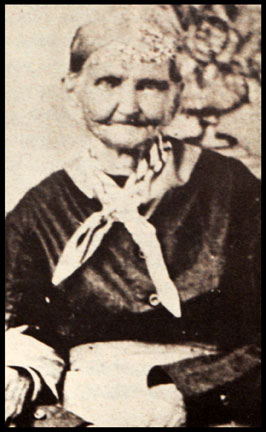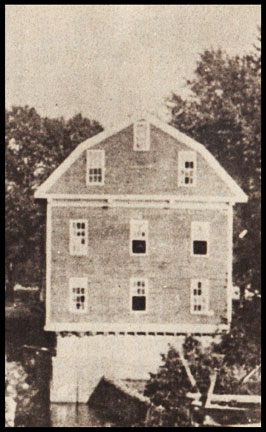 |
||
 |
||

 |
• HOME • GENERAL STORE • NATURAL HERITAGE • HISTORY, CULTURE & CRAFTSMANSHIP |
||||
|
Craftsmanship
• Mills of the Ozarks |
|||||
| War Eagle Index • War Eagle Fair Mills Index • War Eagle • Klepzig • Edwards • Alley Spring • Falling Spring Craftsmanship Index • Basketweaving • Blacksmithing • Dollmaking • Glassblowing • Mills of the Ozarks • Musical Instruments • Painting • Pottery • Quilts and Sewing • Woodcarving Culture Index • Agriculture • Book Learning • Cooking • Craftsmanship • Faith in the Hills • History • Music • People of the Hills • Storytelling • Tourism |
|||
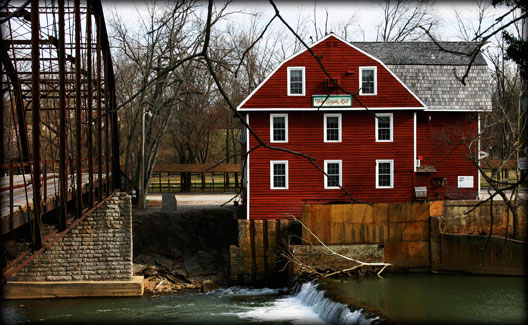
by Joshua Heston
There is a lot of history surrounding this working grist mill on War Eagle River — history that began four years before Arkansas was admitted as a state.
The year was 1832.
A young man by the name of Sylvanus Blackburn (Plate 5) had moved west from Hickman County, Tennessee, settling in the untamed country near present-day Bentonville.
Blackburn worked hard to build a homestead and nearby grist mill. In time, he sent for his young bride, Catherine Brewer Blackburn (Plate 6). The couple would have eight children in the near-wilderness.
By 1838, the War Eagle community had developed and included a blacksmith shop, carpentry shop and saw mill.
War Eagle River (plate 4), however, is prone to floods. After heavy rains in 1848, the 16-year-old mill and mill pond dam would be washed away.
War Eagle Mill was rebuilt soon after by the Blackburn family.
The grist mill’s role in the War Between the States would prove dramatic. The events also illustrate the mayhem civil war can cause.
Sylvanus and Catharine owed a considerable number of slaves. The Blackburns were affluent, respected leaders in the young community — a developing force in the recently admitted slave state of Arkansas.
All five of the Blackburn sons joined the Confederacy.
As the bloodshed drew closer, Sylvanus Blackburn left Arkansas, taking Catharine and other family members to the relative safety of Texas.
By Februrary of 1862, the valley was occupied by the Fourth Iowa Regiment under command of Colonel Grenville Dodge — a Massachusetts native.
Reports came through that the Sixth Texas Cavalry — dispatched by General McCulloch, originally of Tennessee — was nearby.
Word also came that the Texas men planned to “hang every damned Yankee there.”
Today, we see grist mills as quaint structures of an earlier, simpler time. During the Civil War, however, mills were simply targets.
The food grains produced there were essential to armies. Efforts to capture or destroy grist mills were part of each army’s strategy.
On February 28, 1862, Eugene Carr — Union colonel encamped at the Cross Hollows Camp near War Eagle — wrote, “Colonel Dodge came in this morning with all the men and teams he had at the War Eagle Mills*; he regretted very much to leave them, and says the inhabitants begged him to stay. Blackburn, the owner, is very fearful that the mills will be burned.”
On March 4, 1862, Confederate forces rode into the War Eagle Valley, burning the mill to the ground.
Sylvanus' son, James G. Blackburn, would later be killed by bushwhackers. His tombstone in the War Eagle Cemetery simply reads, ”Murdered by a Union Soldier.”
Another Blackburn son, James Austin Cameron Blackburn, rebuilt the grist mill in 1873 (Plate 7). War Eagle — once again a thriving community — was given a post office that year.
Catharine Blackburn passed away on March 13, 1890. Sylvanus died less than a week later.
James A.C. Blackburn’s mill, the third on the property, would last 51 years. In 1924, War Eagle Mill burned down.
The site lay empty for decades. The rural population dwindled. The post office closed in 1967.
In 1973, however, War Eagle Mill was rebuilt by the Medlin family (Plates 1, 3).
Today, it is Arkansas’ only remaining grist mill and is reported to be the only working undershot waterwheel in the nation..
The18-foot waterwheel turns 30-inch stone buhrs, now grinding corn year-round.
The War Eagle Fair — founded in 1953 and known as the grandaddy of all Ozark craft fairs — fills the pastures just across the old War Eagle Bridge, built in 1908 (Plate 2).
The fair is an Ozarks tradition, drawing visitors by the thousands every fall and spring.
The river continues to flow — and occasionally flood.
Once again, War Eagle is the center of a community — a community far greater than just a single river valley.
War Eagle has become a center of an Ozarks community — a place where heritage, history, art and craftsmanship are still celebrated.
____
* In addition to the grist mill, a sawmill also operated along the river.
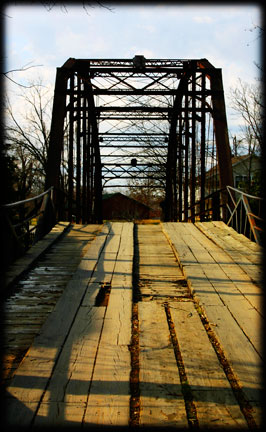
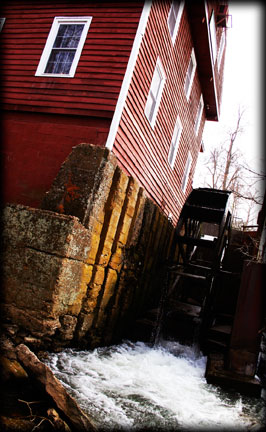

War Eagle Mill photo plates
All photo credits: J. Heston • State of the Ozarks © Archive • Location: War Eagle Mill, Benton County, Arkansas • 02/27/09
Historical information and photos courtesy of War Eagle Mill and the book, War Eagle: It’s Legend, History & Fair by Phillip Steele.

